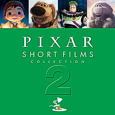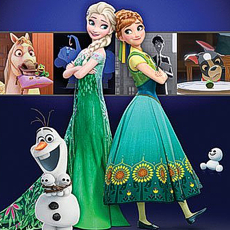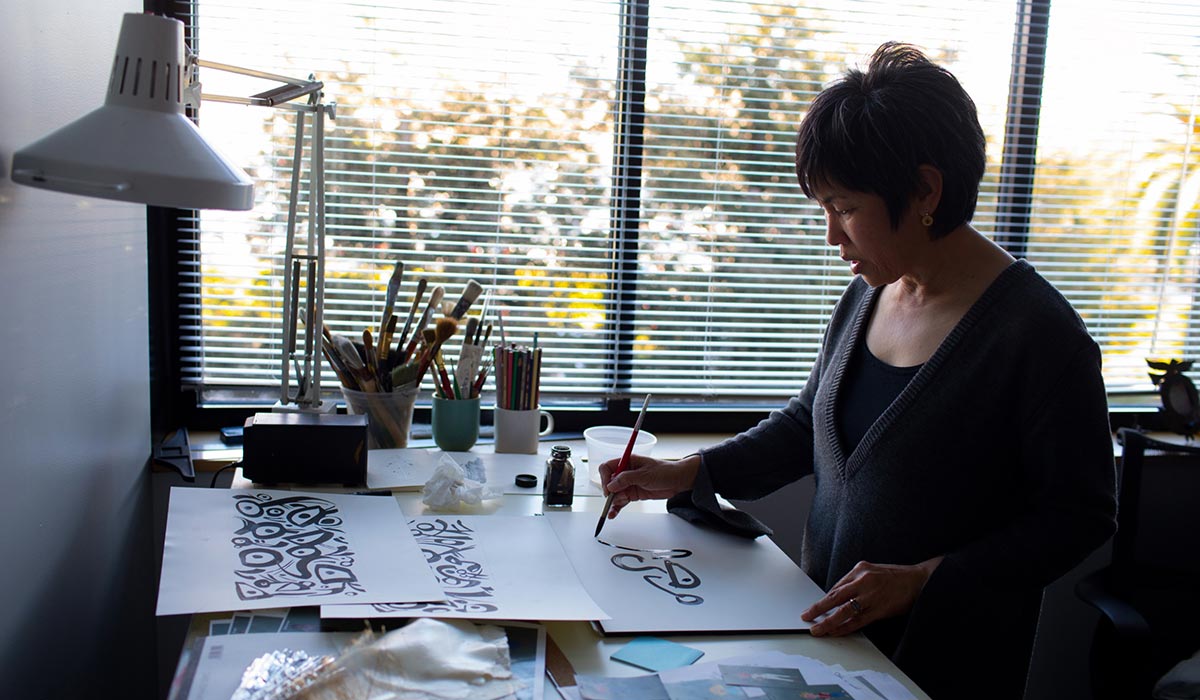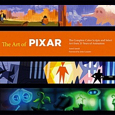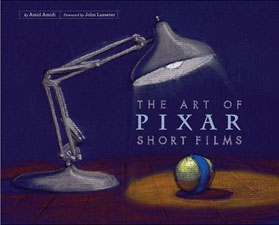 The Art Of Pixar Short Films
The Art Of Pixar Short Films
By Amid Amidi
Foreward by John Lasseter
Chronicle Books
February 25, 2009
Hardcover, 160 pages
$40.00
Every Pixar film since Toy Story has gotten its own elaborate “Art Of” book to celebrate its release. The first few of these have since gone out of print and can command high prices in the collectible book market. Unfortunately, in the midst of these beautiful art books, one aspect of Pixar’s output has been generally neglected. Though Pixar has become known as the most reliable and perhaps the most profitable of the studios currently engaged in animated feature filmmaking, they have also championed the short film. Like many of us, the main architects of Pixar grew up enjoying not only the Disney features, but also the zany exploits of Bugs Bunny, Donald Duck, and Popeye. Pixar’s initial forays into the world of short films was by necessity; but later on, the need to develop talent and technology sat alongside a belief that supporting the short form is an important part of being an animation studio.
Amid Amidi, well-known Cartoon Brew blogger and creator of the magazine Animation Blast, wrote The Art Of Pixar Short Films as a complement to 2007’s DVD and Blu-ray release of the same shorts. The first forty-some pages of his book constitute an Introduction, engaging the reader with a history of the studio from the perspective of creating the shorts. Naturally, this becomes a fairly thorough story of the studio’s beginnings, starting as a division of Lucasfilm under Ed Catmull, to its landmark hiring of John Lasseter after his leaving Disney, then on to the development of Pixar from a successful developer of technology into a true animation studio. Having only a passing familiarity with such details, I certainly appreciated learning more of how the studio came together. Discussing the shorts is the perfect way to highlight important milestones in Pixar’s evolution.
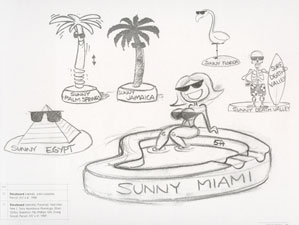
Amidi wisely keeps the text moving along, though, giving only passing references to Pixar’s many technological achievements. It may have left me wanting to know more about software and theories behind computer animation, but Amidi knows that this is not the topic of the book he chose to write. Similarly, other landmarks such as Pixar’s work on Star Trek II and Young Indiana Jones, as well as its commercial work, are mentioned but not dwelled upon. This territory is likely covered more thoroughly in other books, but Amidi has whetted my appetite. Truthfully, I admired Amidi’s restraint in sticking with his topic.
Thus, we get a terrific overview of how each of thirteen films came into being, ranging from 1984’s The Adventures Of Andre & Wally B. to 2007’s Lifted. The early films were really means to an end, as the group struggled to come to terms with an emerging technology, much of which they were creating on the fly; but with the hiring of John Lasseter, it was never all about the tech. Lasseter was a traditionally trained animator, who brought a true storytelling and artistic sensibility to the proceedings. While the technical advancements in films like Luxo Jr. and Tin Toy might have wowed the crowds at Siggraph, it was the heart in the films that began to earn Oscar nominations.

Getting past the studio’s early history, perhaps the most engaging story concerns the creation of Boundin’, the brainchild of senior Pixar member Bud Luckey. Luckey already had a distinguished career before joining Pixar, and turned in (along with his collaborators) a delightfully unique and personal film. It was also interesting to read about Gary Rydstrom’s promotion from sound engineer to director of Lifted, as well as the working relationship between the sometimes volatile pair who directed One Man Band. The stories concerning the film tie-ins, like Mike’s New Car and Mater And The Ghostlight, are less interesting, but I still enjoyed reading every detail.
With all the text out of the way in the first quarter of the book, the rest is opened up for the artwork. Even the Introduction has plenty of photos and artwork, but after that it’s time for the really good stuff. Amidi restricted his text to his Introduction, so the rest of the book has only captions. It’s always a treat to see such things as storyboards and conceptual sketches, or my favorites— color keys! (Seriously. I’m a color keys nut.) But this book also offers such things wire frame images and test renders— by-products of CGI filmmaking. As expected, the reproduction of the artwork and stills is very good. The shorts are broken down into three areas: the Early Shorts that preceded Toy Story, followed by The Next Generation Of Shorts, and the Feature Film-Based Shorts.
Going through the book, it’s obvious that Amidi wanted to give the spotlight to a wider variety of artists than what one often sees on DVD special features, where the main directors and producers generally get the spotlight. In this book, you get to see work from a large number of artists who contributed to the films. There is no conceit here in terms of making us think that any film is the product of one man; rather, the exuberance of Pixar collaboration is quite evident.
The layout of the book is quite pleasing. Each piece of artwork is allowed to breathe. There is no crowding or overlapping of images. The design of the book is interesting as well, utilizing a motif of drafting-style lettering for captions and chapter titles. Like anything else associated with Pixar, it all says “class.” If you have enjoyed previous Pixar art books, and particularly if you would like to know more about the history of the studio, this book is an ideal way to explore more of the company’s legacy.





